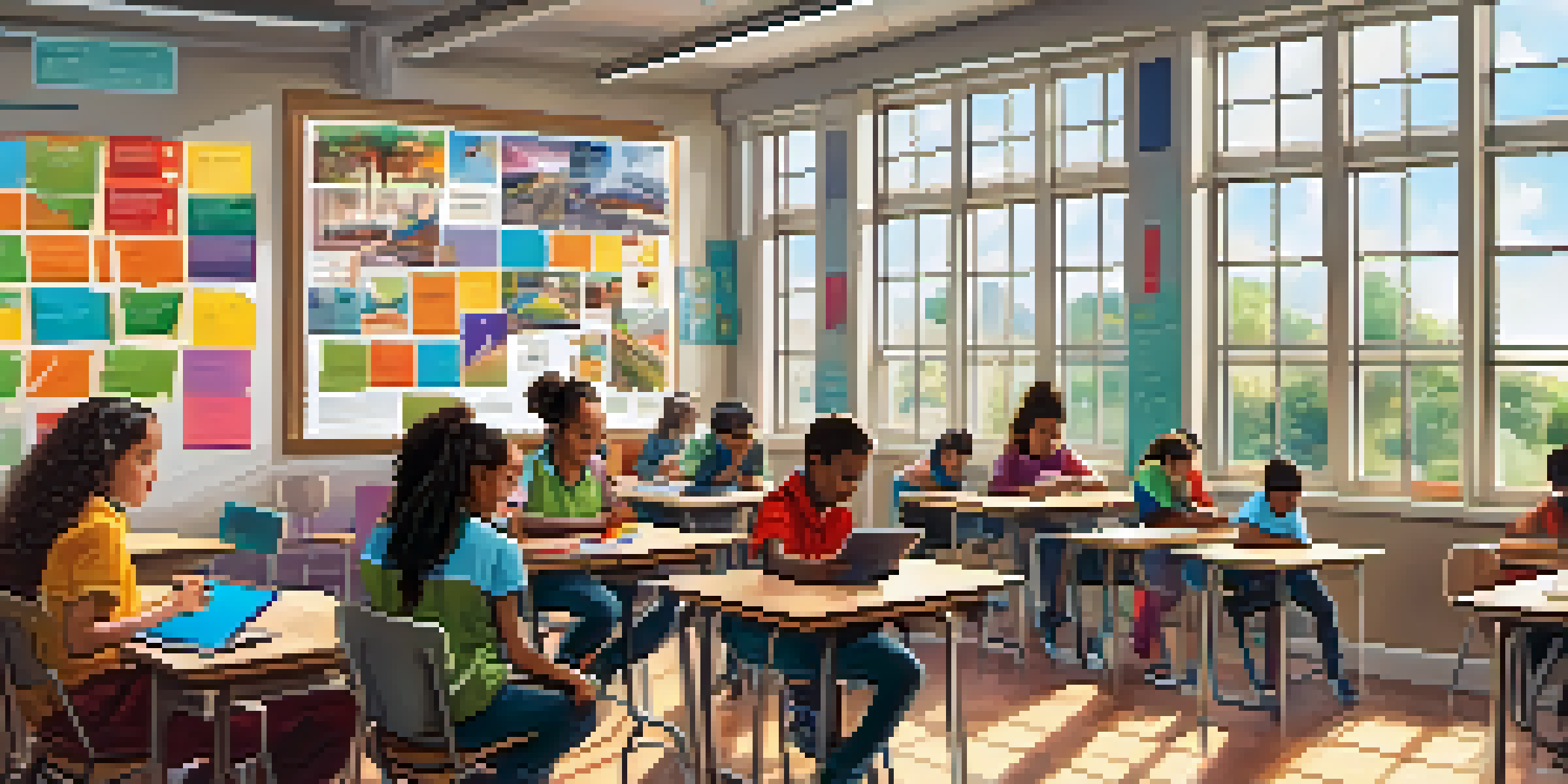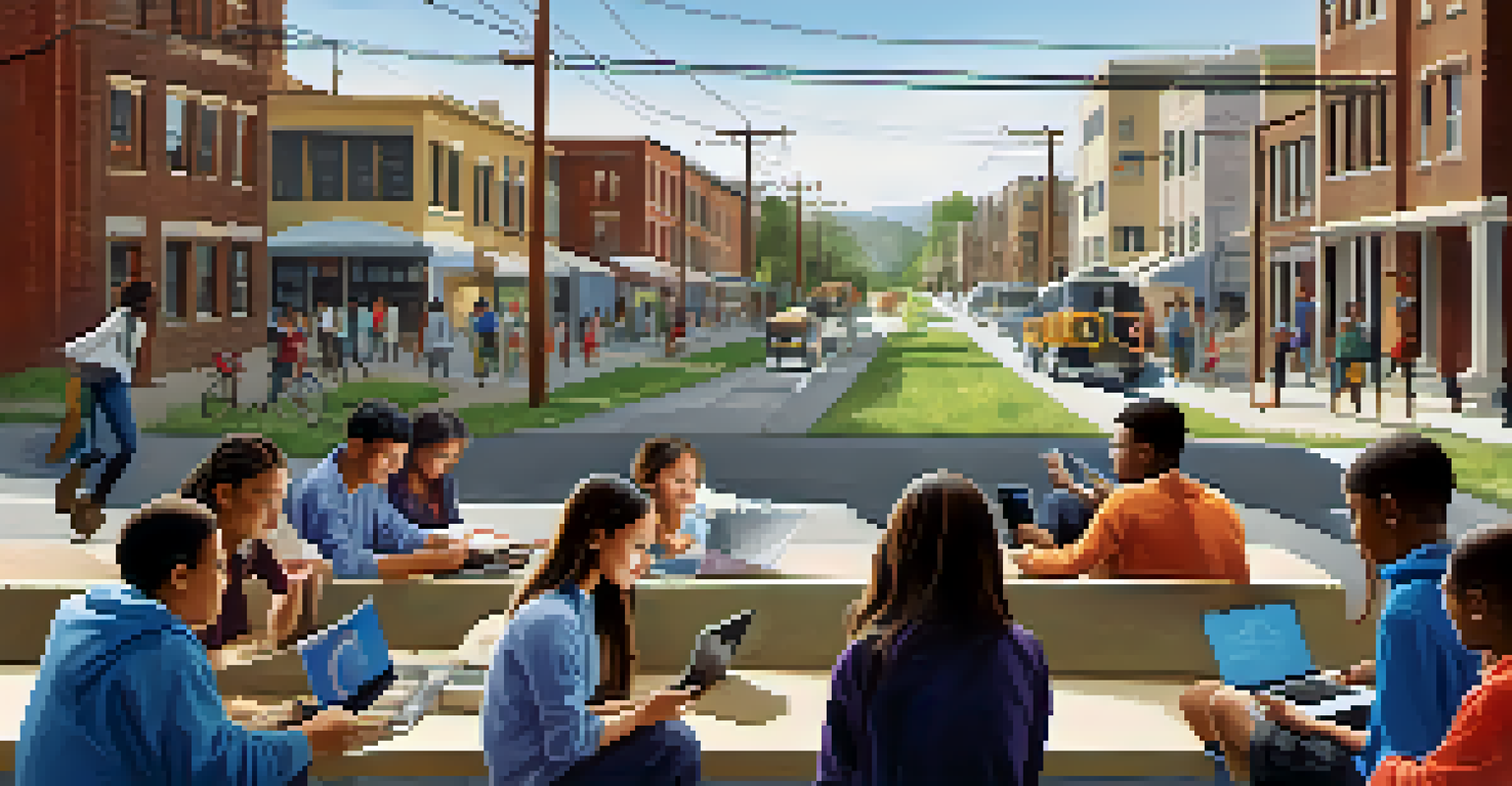Mobile Learning and the Digital Divide: A Critical Analysis

Understanding Mobile Learning in Today's Context
Mobile learning, or m-learning, refers to educational processes that use mobile devices, such as smartphones and tablets, to facilitate learning anytime and anywhere. This flexibility has made it an appealing option for learners who may not have access to traditional educational settings. By leveraging technology, mobile learning can break down geographical barriers, providing opportunities for education in remote areas.
Education is the most powerful weapon which you can use to change the world.
However, the success of mobile learning is heavily dependent on access to devices and reliable internet connectivity. Unfortunately, not everyone has the same level of access, which brings us to the concept of the digital divide. This divide refers to the gap between individuals who can easily access digital technologies and those who cannot, often due to socioeconomic factors or geographical location.
As mobile learning continues to evolve, it's crucial to examine how it can either bridge or widen this digital divide. While it presents incredible opportunities for engagement and knowledge acquisition, we must also address the disparities that exist to ensure equitable access for all learners.
The Digital Divide: A Barrier to Mobile Learning
The digital divide manifests in various forms, including disparities in hardware access, internet connectivity, and digital literacy. For instance, students in urban areas may have smartphones and high-speed internet, while those in rural locations might struggle with basic connectivity. This inequality in access can lead to significant differences in learning outcomes.

In many cases, the lack of access to necessary technology means that marginalized communities miss out on the benefits of mobile learning. For example, a student in a low-income area might be unable to participate in an online class due to insufficient resources, effectively sidelining them from educational opportunities. This situation perpetuates existing inequalities in education and skill development.
Mobile Learning's Accessibility Issues
Access to mobile learning is hindered by the digital divide, which affects learners based on socioeconomic factors and geographical location.
Addressing the digital divide requires collaborative efforts from governments, educational institutions, and tech companies to create inclusive policies and programs. By providing affordable devices and enhancing internet infrastructure, we can help ensure that mobile learning is accessible to everyone, regardless of their background.
The Role of Mobile Learning in Bridging the Gap
Despite the challenges posed by the digital divide, mobile learning has the potential to bridge gaps in educational access. By utilizing mobile technology, educators can reach underserved populations, offering resources and courses that were previously unavailable. This innovative approach can help empower learners and provide them with the skills they need to succeed.
The digital divide is not just about access to technology; it's about the ability to use it effectively and creatively.
For instance, programs that provide free educational apps or online courses can significantly enhance learning opportunities for those who might not have access to traditional education. These resources can be tailored to meet the unique needs of different communities, ensuring that everyone has the chance to learn and grow.
Moreover, mobile learning can foster community engagement and collaboration. By connecting learners to peers and educators through digital platforms, we can create networks of support that help individuals overcome the barriers posed by the digital divide.
Challenges in Implementing Mobile Learning Solutions
While the benefits of mobile learning are clear, implementing effective solutions isn't without its challenges. One significant obstacle is ensuring that all learners are equipped with the necessary skills to navigate mobile learning platforms. Digital literacy is crucial, as learners must be able to use technology effectively to benefit from mobile learning.
Moreover, the quality of mobile learning content can vary greatly. If the material is not engaging or relevant, learners may become disinterested, leading to poor retention and outcomes. To combat this, it's essential for educators to create high-quality, interactive content that resonates with learners and meets their needs.
Innovative Solutions for Education
Mobile learning initiatives, like SMS education in rural areas, demonstrate how technology can bridge educational gaps for underserved populations.
Additionally, educators must consider the varying levels of access to technology among their students. Tailoring solutions that are adaptable to different environments can help ensure that mobile learning is effective for all, regardless of their circumstances.
Case Studies: Successful Mobile Learning Initiatives
Several case studies illustrate how mobile learning initiatives can successfully address the digital divide. For example, the 'One Laptop per Child' initiative aimed to provide affordable laptops to children in developing countries, enabling them to access educational resources. This program demonstrated how targeted efforts can enhance access to learning.
Another notable example is the use of SMS technology in rural areas to deliver educational content. In countries like Kenya, organizations have utilized SMS to send lessons and quizzes, reaching students who may not have access to the internet. This approach not only bridges the gap but also fosters a sense of community as learners engage with the material.
These case studies highlight the importance of innovative thinking in overcoming barriers to education. By exploring diverse methods of mobile learning, we can find effective solutions that empower learners and contribute to closing the digital divide.
Future Trends in Mobile Learning and Accessibility
As we look ahead, several emerging trends in mobile learning point toward increased accessibility and inclusivity. The rise of 5G technology promises faster internet speeds and greater connectivity, which could significantly enhance mobile learning experiences. This advancement would allow for more interactive and resource-rich content that can be accessed by more learners.
Additionally, the integration of artificial intelligence (AI) into mobile learning platforms can provide personalized learning experiences. By analyzing user behavior and preferences, AI can tailor content to meet individual needs, making learning more effective and engaging. This personalized approach can help address the diverse challenges faced by learners across various backgrounds.
Future Trends Enhance Learning Equity
Emerging trends such as 5G technology and AI integration promise to improve accessibility and personalize learning experiences for all students.
Finally, the growing emphasis on digital literacy initiatives will be crucial in ensuring that all learners can take advantage of mobile learning opportunities. By equipping individuals with the necessary skills to navigate the digital landscape, we can work towards a future where mobile learning truly bridges the digital divide.
Conclusion: Ensuring Equity in Mobile Learning
In conclusion, mobile learning holds great promise for transforming education and addressing the digital divide. However, it's vital that we approach its implementation thoughtfully, ensuring that all learners have equal access to technology and resources. By prioritizing equity, we can leverage mobile learning as a powerful tool for social change.
The journey to bridge the digital divide is ongoing and requires the commitment of educators, policymakers, and communities. Together, we can create an inclusive educational landscape where everyone has the opportunity to thrive, regardless of their circumstances.

As we continue to explore the potential of mobile learning, let us remain mindful of the challenges and work collaboratively to develop solutions that empower all learners. Only then can we truly harness the power of technology to create a more equitable future.